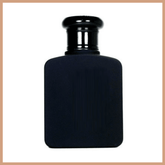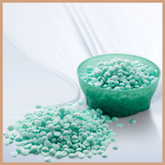Cold Process Soap Trouble Shooting Guide: How to Fix the Most Common Issues
There are a good few examples of what can go wrong when making cold process soap. In today's knowledge guide, we will talk through a few of the main, most commonly found problems. We will talk through the problem itself, if and how the problem can be rectified and then how to avoid the problem altogether.

After all, there's nothing more frustrating than preparing to make a lovely handmade soap batch just for something to go wrong! Soap making isn't just an art form, there is some amount of science and accuracy needed to be able to make soap.
Most failed batches are caused by inaccuracies in your ingredients' measurements. Preparation is key: If you take the time to make sure all measurements are correct, temperatures are as they should be and all equipment is to hand, you should be able to eliminate 90% of the risk of a failed batch.
While we've covered some of the basics of cold process soap making in our post How to Make Cold Process Soap: The Ultimate Guide for Beginners, if you find you are running into problems with your cold process soaps, our guide is here to help you identify and rectify the most common issues.
Soap Batter Thickened Too Quickly

You may have heard the term “accelerated trace.” This is where the soap batter sets up too quickly and you may not have much time to add fragrance, colouring or manage any swirls in your planned design. There may be a good few reasons why this happens.
Sometimes it’s the recipe itself. Using high percentages of hard butters and solid oils such as coconut and palm oil could cause accelerated trace. A tweak in your recipe could be the answer to solve this, using lighter oils (oils that are liquid at room temperature) such as olive oil, almond and rapeseed (canola) oil would help as these oils are known as “slow movers”. (Olive pomace is an exception to this rule though as this oil is known to accelerate trace.)
If you’ve eliminated the possibility it’s your recipe causing the problem, then move on to our troubleshooting list below:
Over mixing
Over mixing is one of the most common causes for a thickened soap batter. Try not to overuse the stick blender, mix by hand or alternate between the two. Use the stick blender on short bursts.
Too much of a water discount
Check your recipe! Run your recipe through a soap calculator to make sure you are using the full water allowance. This will help keep your soap batter more fluid for longer.
Your temperatures are too hot
The ideal soaping temperature is at about 110°F. Your oils and lye should really be within 10°F of each other too. Having your temperatures too high can cause accelerated trace.
Your temperatures are too cool
As we have said above, 110°F is the ideal soaping temperature. Just like with higher temps, lower temperatures can also cause accelerated trace. However, lower temps such as soaping at room temperatures can cause a False trace. This is where the soap batter seems to reach a super quick trace and takes on a curdled appearance. It tricks you into thinking it has reached trace but it actually hasn’t.
If you are soaping at room temperature and find you have caused a false trace, continue mixing through the thickened batter until it becomes smooth and more liquid again. We would not suggest soaping at cooler temperatures until you are experienced enough to know how your batter behaves soaping at the right temperatures. This will help you recognise a false trace.
Fragrance and essential oils can accelerate trace
The alcohol in the fragrance oil may react with the soap batter, heating up the mixture. You'll want to test all new fragrance oils in small batches. You may need to do some research for fragrance oils that work well in CP soap. Look at the reviews left on supplier's websites as you may find other soap makers have left reviews regarding how well that fragrance has worked in CP soap.Reach out in soap making groups or forums and ask if anyone has had experience with that particular scent.
If you would still like to make with a fragrance oil that accelerates trace there are a couple of things you could try before giving up on that scent.
Keep your designs simple
With accelerated trace you will not have a lot of time to make intricate patterns. You could also try adding the scent to your oils before adding the lye. This will help by diluting the fragrance in the oils before the chemical reaction takes place.
Soap Batter Won’t Reach Trace

Sometimes it may seem that your soap batter is not going to reach trace. You mix and mix and nothing seems to happen? As long as you know you have your measurements right it will definitely reach trace at some point. Just leave it to do its job, stir frequently and then pour into the mould.
Other reasons your soap batter won’t reach trace are:
Too much water
Check your recipe, make sure you are using the correct amount of water. You could do a water discount if you know that you have a very slow moving recipe.
Weak or inactive lye
Sometimes the lye you may be usings becomes weak or inactive. This will be because it has been able to attract moisture from the air whilst being stored. Make sure you use a suitable airtight container to store your lye.
Use a stick blender
If you are stirring by hand this in itself can cause the batter to take ages to trace. Back in the old days before stick blenders were available, it used to take soap makers hours to bring a soap batter to trace. Using a stick blender will help speed up the process. But please be aware, prolonged bursts of the blender will cause trace to happen very quickly so be sure to use short bursts.
Soap at higher temperatures
if you have a recipe that takes a long time to trace, try soaping at higher temps. Even 10°f can make a big difference.
“Soap on a Stick”
Soap on a stick must be the most frustrating experience for any soap maker. This is usually caused by the fragrance oil or essential oil reacting with the soap batter. Soap on a stick is literally exactly as it sounds – when the soap sets so hard, so thick and so quickly that it just sets and hardens around whatever you are stirring it with and you are unable to pour it in the mould.
If it’s your fragrance oil that causes this to happen then I’m afraid there isn’t really much you can do to save the batch! Just concentrate on pushing what you can into the mould trying to smooth out the top. The soap will be completely usable, it just won't look very aesthetically pleasing.
Here are a few other things you may want to consider:
Some fragrance oils or essential oils can drastically speed up trace
Florals and spices are well know to cause this problem. You can try and take some of your melted oils out of the pot, and add the FO oil to this. Add your lye solution to the rest of the oils and blend until it has emulsified (very very light trace) then try and add the fragrance oil and oil mix and quickly stir in by hand. This should give you a little more time to work with the batter.
Over mixing
Only ever use short bursts with your stick blender or forget the blender and mix by hand. Over blending will cause the batter to thicken much quicker. You do not want this with a fragrance that can cause soap on a stick.
Unsuitable Fragrance oils
Some fragrances are just not suitable for cold process soap making. Admit defeat and move on to the next!
Hot process the batch
if you find yourself with a soap on a stick and you have a crockpot/slow cooker to hand, you could always try to salvage the batch by hot processing it. This will force saponification and may loosen the soap enough to be able to put it in a mould. Cook in the crockpot until the soap turns transparent and takes on the look of apple sauce with a consistency of mashed potatoes.
Re-batch
If you do not have a crock pot to hand you could mould the soap as best as you can and let it sit for 24hrs. You can then re-batch the soap by grating it and placing it in a slow cooker or bain-marie, add a little water and melt it down.
Remember, you don’t want to cook your soap, you simply want to melt it just enough to be able to re-mould. This will take a while and it’s not a fast process but adding a little water will help with the consistency. You can add colour and fragrance at the end of the melt if you didn’t get a chance to complete it before.
Ricing in Soap Batter

When you add certain fragrance oils, this can sometimes cause what the soaping world calls “ricing”. This is where the fragrance oil binds with the hard fats and causes the mixture to form hard lumps that look like rice.
Facing ricing in your batter? Try these suggestions:
Blend out the lumps
Sometimes you are able to mix these little lumps out by stick blending but be aware this may cause the soap batter to thicken quite a bit, but at least you will be able to save the batch. If the lumps can not be blended out then you should be able to re-batch the soap.
Fragrance Oil Reviews or Feedback
Try looking at reviews from soap makers on the supplier’s website as you may find these problems are reported there to make other soapers aware.
Mould it and hope for the best!
Sometimes you cannot mix out all of the lumps. If this is the case, then you could mould the soap and wait to see what happens. Sometimes you get lucky and the ricing will just affect the look of the soap (you may find it has a slightly mottled appearance) but will be completely useable.
Other times the ricing can cause separation of the ingredients (you’ll notice it looks curdled) and you may be left with oily pockets. If the latter happens, then your only option would be to try and re-batch the soap - See the suggestion under the Soap on a Stick heading above for advice on re-batching.
Soap Batter is Separating or Curdling
Separation (much like ricing) is generally caused by the added fragrance oil. You will know when this happens as your mixture will take on a curdled appearance. It can also be caused by having your temperatures too high or too low.
Blend it out
You would normally be able to use the stick blender to bring it all back together again. Be prepared to work with a thicker traced soap after the extra blending.
Separation after moulding
If the soap is in the mould and then decides to separate, you can either tip it back out and re-mix the batter or wait and see if it all re-absorbs. If it does not re-absorb, you will be left with little oily pockets or a layer of oil on top of the soap. This will not be usable as it is. You would need to re-batch the soap and try and salvage it that way.
Check those temperatures
If your temperatures are too high OR low, or there is more than 10°f difference in the oil temps and the lye solution temps this can cause separation. Always check your temperatures!
Soap Has Turned Brown

When a soap discolours, it is usually caused by the vanillin content within the fragrance oil used. If a soap is in a single cell mould, you would normally notice the whole soap turning brown. When making a loaf and you slice it, it may seem that a dark ring has appeared around the outside with a lighter colour on the inside. The dark ring around the outside is because the air has oxidised it. Once sliced, the oxygen will eventually oxidise the rest of the soap so it will all turn dark.
Vanillin can cause all different shades of brown from light cream to the darkest brown! Here are some suggestions if you find your soap has turned brown:
Work with the Colour
There isn't very much you can do to stop this happening so you could just try to work with it. Incorporate the brown into your soap design. You could try using iron oxides to darken the shade or titanium dioxide to lighten the shade. You could also only fragrance part of the soap so that you can keep some brighter colours with your design.
Use a Vanilla Colour Stabiliser
You can try using a vanillin stabiliser if the vanillin content is low. However, it is not very consistent in cold process soap so you could just be delaying the inevitable. It may help delay the discolouration or days, weeks and even months but it is still likely to discolour at some point.
Glycerine Rivers
Have you ever encountered the transparent crackling effect that appear in some cold process soaps? These are called “glycerine rivers”. Some soap makers embrace this little phenomenon and others absolutely hate it!
Glycerine is a natural by-product of the saponification process. Glycerine helps attract moisture to the skin and is what makes a handmade soap the best cleansing product!
There are many reasons as to why these appear in some soaps more than others:
Too Much Titanium Dioxide
Adding too much titanium dioxide can cause excess glycerine rivers. Try adding as little as you can and make sure you mix it thoroughly with water or oil before adding to the soap. Sometimes using warm or hot water or oil with the titanium dioxide will also help.
Check Your Water discount
Excess water can cause excessive glycerine rivers. Try a 10-15% water discount to see if it alleviates the issue.
Keep your temperatures cool
It is said that higher temperatures can contribute to glycerine rivers. Try soaping at lower temps or place your finished soap in the fridge or freezer for a short time after pouring into the mould.

We have tried to cover the most common problems when it comes to making cold process soap, but you’ll have to bear in mind that it is all about trial and error, testing and more testing! Even the most experienced makers cannot prevent most of these examples from happening. It takes us all by surprise and you just have to wing it and go with the flow! The most important thing to know is that these problems happen to the best of us, just enjoy the process and have fun!
If you've not yet made cold process soap, why not start with our beginner's recipe for Jasmine Cold Process Soap here?
If you're brand new to soap making and want to try something simpler, then we have a wide range of tutorials for making your own melt and pour soaps too. Check out our Melt & Pour Soap beginner's tutorial to get you started.








6 Comments
Thanks for your blog.l am reading from Ghana.Your message is very informative since l have been noticing oil on top of my homemade soap.There are some times l make my soap without having issues other times l will be having issues with the soap recipe.
Bar soap separate during saponification process
Thank you so much….My batter hardened up so quickly that I could not put it into the mold. So, I just put it into the crockpot to hot process it. Lets hope it turns out! Stay tuned.
Leave a comment
All blog comments are checked prior to publishing